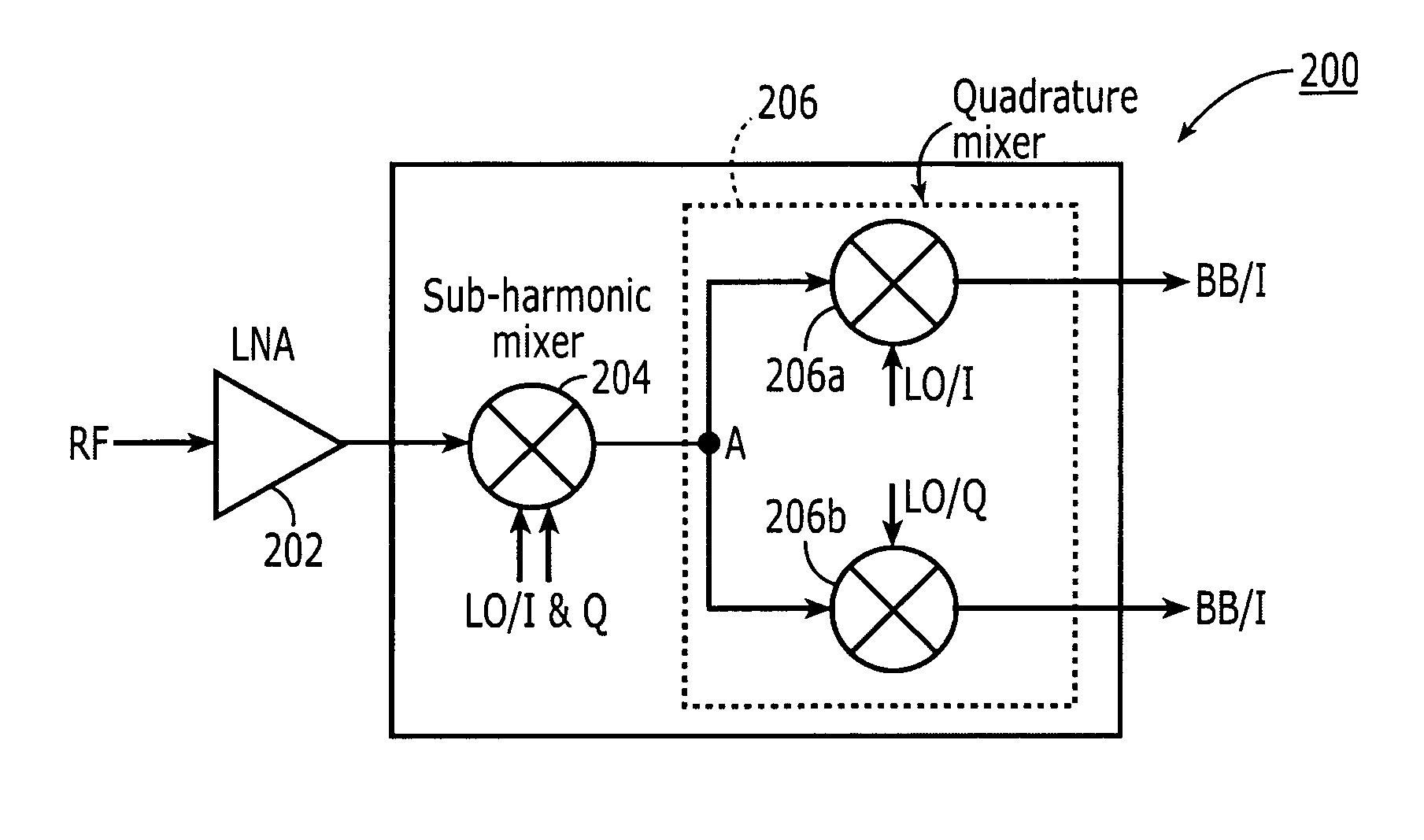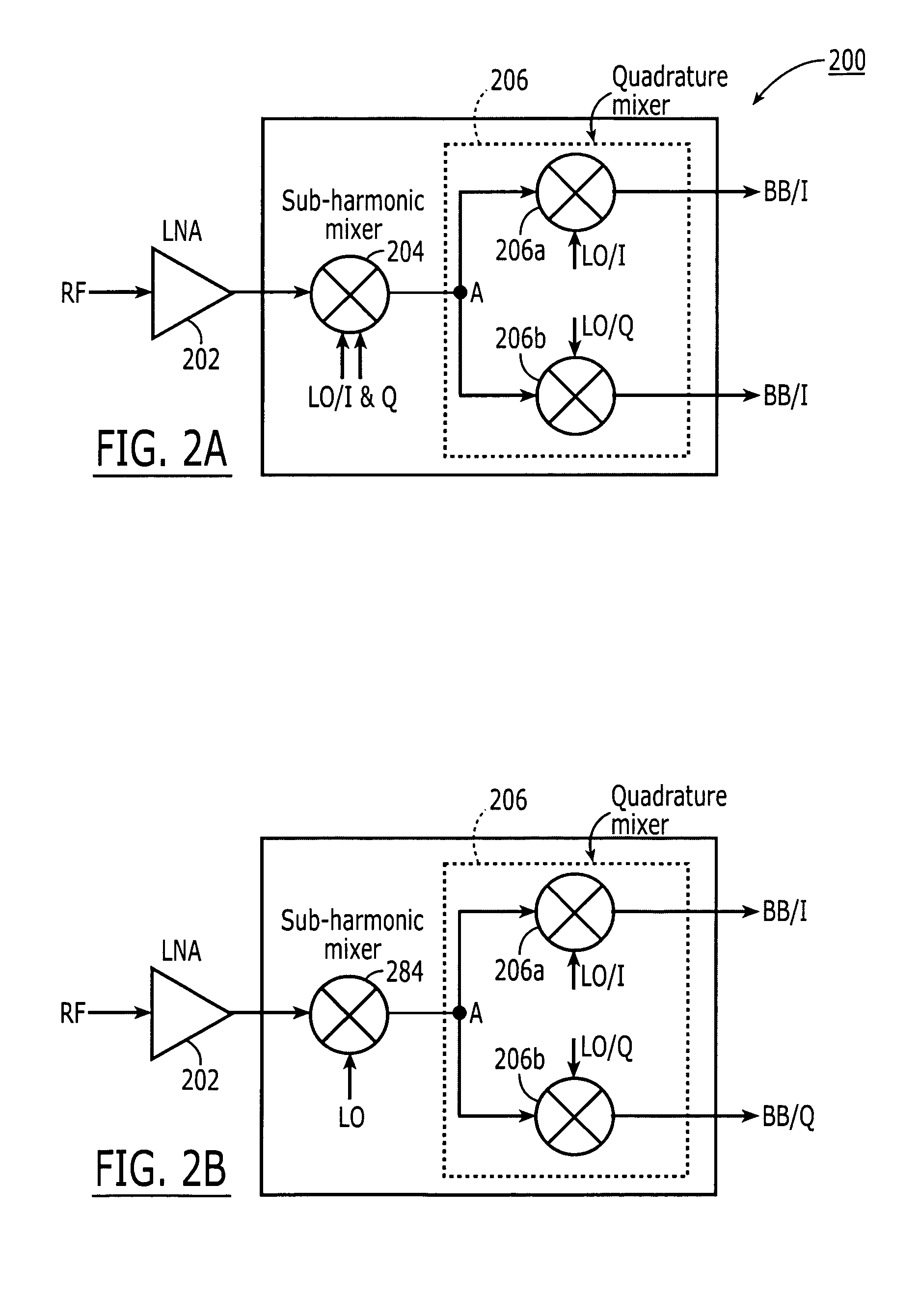Quadrature sub-harmonic frequency down-converter
a sub-harmonic frequency and transformer technology, applied in the field of quadratic sub-harmonic frequency down-converter, can solve the problems of complex circuits, power-hungry, and need for two local oscillators and their incumbent circuitry, and achieve the effects of reducing increasing the complexity of circuits, and increasing the cost of circuits
- Summary
- Abstract
- Description
- Claims
- Application Information
AI Technical Summary
Problems solved by technology
Method used
Image
Examples
Embodiment Construction
[0027] The present invention pertains to a quadrature sub-harmonic frequency down-converters and up-converters that frequency convert between baseband and and RF in two stages having the advantages of requiring only a single local oscillator frequency much lower than the received RF signal frequency.
[0028] The invention uses the two quadrature components of a single local oscillator signal. Using a down-converter as an example, the first stage, the RF signal is mixed with both components of a local oscillator signal (LO) at or about one third the RF frequency in a sub-harmonic mixer using multi-phase LO signals, in this case, two signals in quadrature, to produce an intermediate frequency output signal (IF) having a frequency of twice the local oscillator frequency minus the RF frequency. i.e., 2FLO−FRF=⅓FRF=FIF. In a second stage, that IF signal is split into two and supplied to a quadrature mixer that mixes the IF signal with the I component of the same local oscillator signal an...
PUM
 Login to View More
Login to View More Abstract
Description
Claims
Application Information
 Login to View More
Login to View More - R&D
- Intellectual Property
- Life Sciences
- Materials
- Tech Scout
- Unparalleled Data Quality
- Higher Quality Content
- 60% Fewer Hallucinations
Browse by: Latest US Patents, China's latest patents, Technical Efficacy Thesaurus, Application Domain, Technology Topic, Popular Technical Reports.
© 2025 PatSnap. All rights reserved.Legal|Privacy policy|Modern Slavery Act Transparency Statement|Sitemap|About US| Contact US: help@patsnap.com



